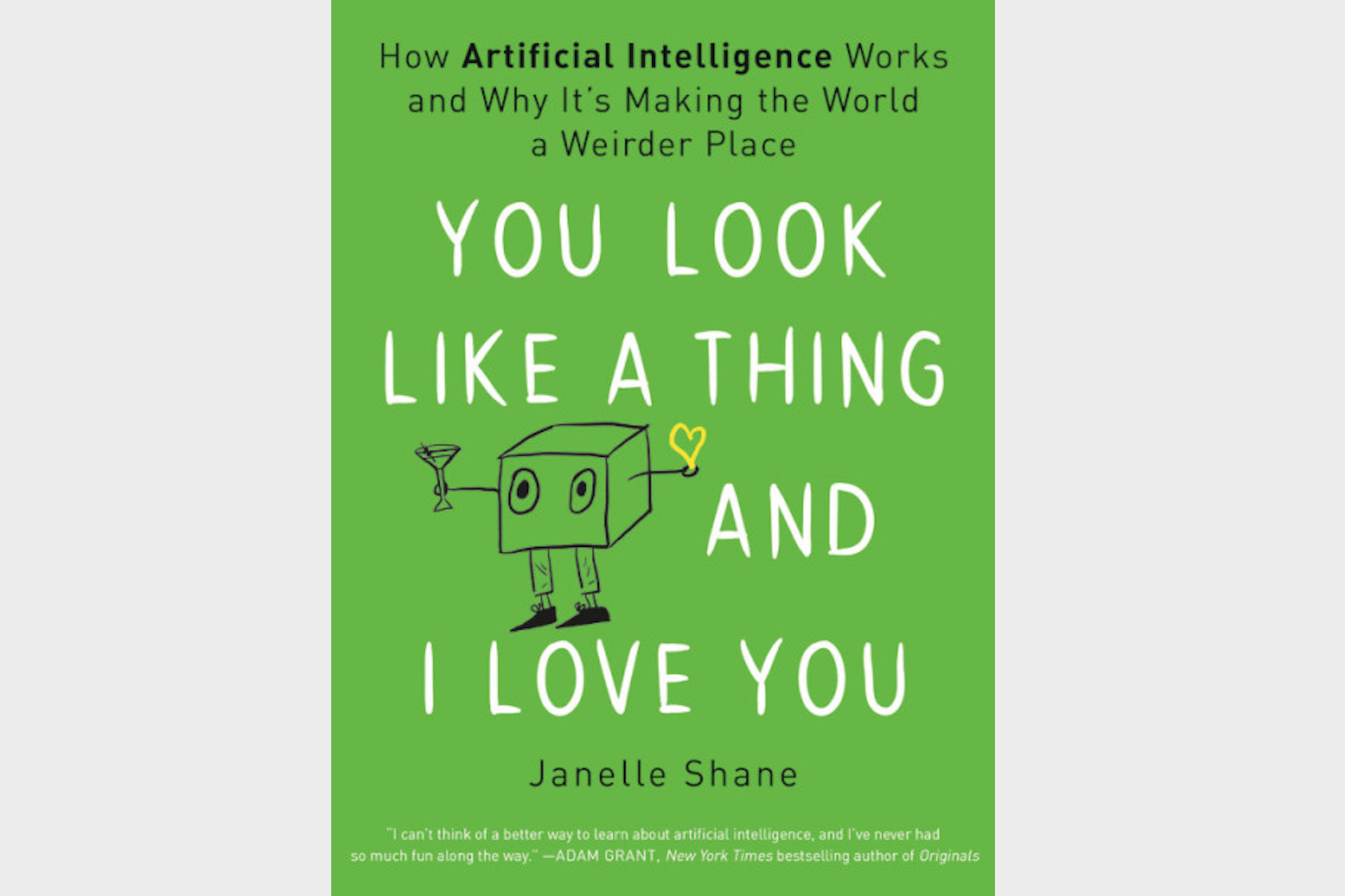What is AI? AI is everywhere, but where is it exactly? What does AI look like? What does AI act like? What does AI think like? And, most importantly…how intelligent is AI, really?
These questions comprise a mere fraction of the queries that have long been leveled at the concept of Artificial Intelligence that creator of the popular blog AI Weirdness Janelle Shane sets out to answer in her debut book You Look like a Thing and I Love You: How Artificial Intelligence Works and Why It’s Making the World a Weirder Place (Voracious, Little Brown 2019). The text comes as a decidedly welcome addition to the overwhelming assortment of new book-length attempts to make the machine-learning-minutiae of Artificial Intelligence more generally intelligible. In addition to offering some much-needed clarity to conversations about the complex field, Shane’s humorous explanatory approach, which mirrors the comic, illustrated style of her blog, makes the world of AI pleasantly accessible to those looking for a primer, charming to others who may hold prior knowledge of the technology, and laughter inducing for all types of readers.
At once, the title of the book, You Look like a Thing and I Love You, is sure to prompt a few quizzical looks–that is until the second page where Shane reveals the title to be an attempted pickup line generated by her own AI after she tried to train it to sweet-talk like a human. From the funny list of faulty pickup lines generated by the project, Shane demonstrates how her AI enabled her to learn more about the capacities and incapacities of the technology to imitate human language in all its subtlety and nuance. And although researchers like Shane are working constantly to find out just how AIs make decisions, “in general…” Shane contends, “it’s hard to discover what an AI’s internal rules actually are” (24).
All silliness aside, it is this idea of trying that becomes so operative to Shane’s text and to the larger field of Artificial Intelligence research: while we’re trying to understand the technology, AI is likewise trying to understand us, and we’re both learning by trial and error. For Shane, such errors are absolutely central to our knowledge of AI; and the mistakes are not only made on behalf of machines. Many of the common misconceptions we have about the technology derive from our own errors in understanding what AIs really are and what they are actually capable of.
To clarify and dispel with the confusion that abounds once the word AI appears, Shane states early on in the book, exactly what she means when she uses the term, “the way it’s mostly used by programmers today: to refer to a particular style of computer program called a machine learning algorithm” (8). Shane is aware however, that “machine-learning algorithm” may be an equally perplexing term for readers with little to no previous knowledge of the field. Thus, she also takes time to clarify the second term by detailing the differences between rules-based programming and machine learning algorithms. After which she goes step-by-step through the intricacies of the machine learning algorithm and the process by which it learns.
As Shane astutely points out, another large and longtime contributor to our popular misunderstandings is the surfeit of science fiction accounts of robot sentience and news headlines predicting the impending future of AI dominion where all human labor will be replaced with autonomous machines. Throughout the book, Shane actively debunks such human-made machine-myths with scientific research and personal case studies that test the limits of the AI’s virtual brain, and often in hilarious ways.
In one example, Shane crowdsources a list of Halloween costumes and asks an AI (in this case a recursive neural network, or RNN) to imitate them. “The Grim Reaper Mime,” “Professor Panda,” “Failed Steampunk Spider,” and “Ms. Frizzle’s Robot” are just a few of the idiosyncratic costume ideas that the AI came up with.
While coming up with a list of Halloween costumes, cat names, or Buzzfeed-style article headlines are AI tasks that yield strange results or casual misinformation, the stakes of such errors have little to no risk potential in the real world. However, Shane cautions that this is not always the case and points to certain frailties of the technology that have yielded disastrous results. For instance, AIs can amplify biases if they are trained with already biased information or data, and AIs can unintentionally memorize massive data sets with sensitive employee information that make security breaches that much easier and far more likely. To avoid such situations in which AI-powered solutions are a bad means of solving real-weird problems, Shane encourages researchers to anticipate the problem first by constantly asking questions like “is this a good problem for an AI to solve?”
Ultimately, from deep learning, to evolutionary algorithms, to generative adversarial networks (GANS), Shane offers a comprehensive yet accommodating overview of the merits, milestones, mishaps, and misdeeds of the world of AI through machine learning algorithms. Using her own amusing anecdotes, illustrations, and personal experiments to highlight the hard scientific facts and historical landmarks of the field, Shane’s book is a unique and thoroughly enjoyable contribution to the growing body of literature on AI.


